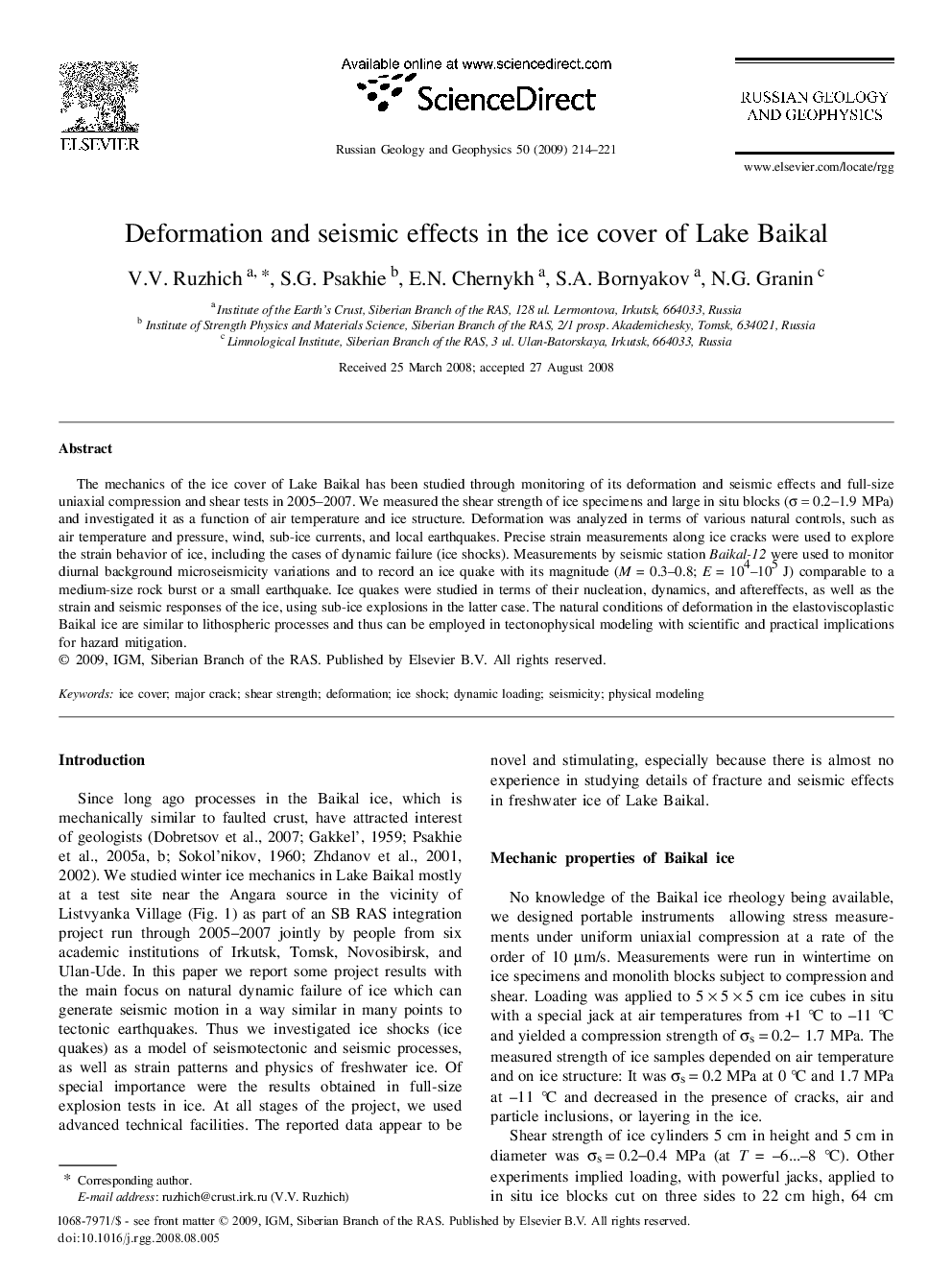| Article ID | Journal | Published Year | Pages | File Type |
|---|---|---|---|---|
| 4738029 | Russian Geology and Geophysics | 2009 | 8 Pages |
The mechanics of the ice cover of Lake Baikal has been studied through monitoring of its deformation and seismic effects and full-sizeuniaxial compression and shear tests in 2005–2007. We measured the shear strength of ice specimens and large in situ blocks (σ = 0.2−1.9 MPa) and investigated it as a function of air temperature and ice structure. Deformation was analyzed in terms of various natural controls, such as air temperature and pressure, wind, sub-ice currents, and local earthquakes. Precise strain measurements along ice cracks were used to explore the strain behavior of ice, including the cases of dynamic failure (ice shocks). Measurements by seismic station Baikal-12 were used to monitor diurnal background micro seismicity variations and to record an ice quake with its magnitude (M = 0.3–0.8; E = 104–105 J) comparable to a medium-size rock burst or a small earthquake. Ice quakes were studied in terms of their nucleation, dynamics, and after effects, as well as the strain and seismic responses of the ice, using sub-ice explosions in the latter case. The natural conditions of deformation in the elastoviscoplastic Baikal ice are similar to lithospheric processes and thus can be employed in tectonophysical modeling with scientific and practical implications for hazard mitigation.
